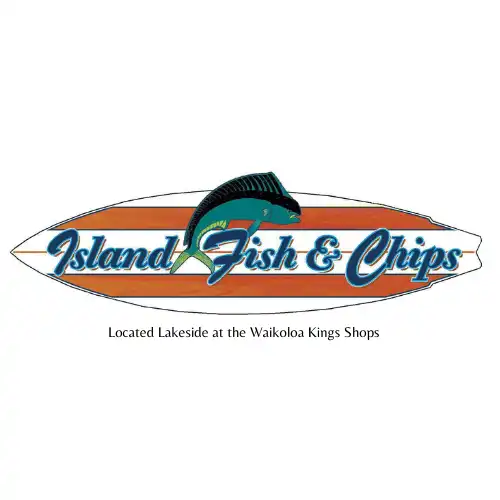Hawaiʻi County task force continues to combat opioid crisis with collaborative outreach
On Valentine’s Day, that Hawaiʻi Island Fentanyl Task Force will be showing Aloha to all loved ones and the community by reaching out with a message of hope, treatment and the value of prevention.

The Task Force will be hosting a sign waving to bring awareness of the overdose and addiction problem on the Big Island and be an open path for help. With addiction touching countless lives, the sign waving is a reminder to the community that prevention, treatment, and recovery are possible.
Volunteers will hold signs displaying messages of encouragement, support, and remembrance to foster conversations of change and break the stigma surrounding substance use disorders.
The event will begin at 4 p.m. on Valentine’s Day Friday, Feb. 14 in multiple locations, including:
- Hilo – Walmart Parking Lot on Kaneolehua Avenue
- Kona Makai – Near the Mormon Temple on Queen Kaʻahumanu Highway
- Kona Mauka – Old Mamalahoa Highway in front of Randy’s Huli Huli Chicken
- Waimea – Ikua Purdy Monument in front of Parker Ranch Center
“This event is about more than just waving signs; it’s about showing those who are struggling that they are not alone,” said Dr. Hannah Preston-Pita, CEO of the Big Island Substance Abuse Council. “We want to educate our community on the resources available, honor those we’ve lost, and rally together in support and Aloha.”
Residents are encouraged to join at any of the locations with their own signs with positive supportive messages or with signs the Task Force will provide on site.
This initiative is supported by the Hawaiʻi Island Fentanyl Task Force, the Big Island Substance Abuse Council, Going Home Hawaiʻi, and Recovery of Hawaiʻi, all working together to create a future free from the devastation of addiction and overdose.
For more information on how to get involved, visit the Hawaiʻi Island Fentanyl Task Force website or email admin@hiftf.org to schedule training or educational presentations.
Hawaiʻi Island Fentanyl Task Force and Hawaiʻi Police Department collaboration
Last month, the Task Force and the Hawaiʻi Police Department announced the launch of the 2025 Naloxone hand-off, which equips local officers with life-saving Naloxone kits, empowering them to respond effectively to opioid overdoses in the community.

Naloxone, also known by the brand name Narcan, is a fast-acting medication that can reverse the effects of a potentially fatal opioid overdose. Big Island overdose deaths from illicit substances average 1 every 8 days, and following the national trend, opioids and especially fentanyl are increasingly involved in drug overdoses and deaths.
“We believe that equipping our officers, other first responders, and all community members with Naloxone is a vital step in our fight against the opioid crisis,” said Dr. Kevin Kunz, a Co-Leader of the Hawaiʻi Island Fentanyl Task Force. “By partnering with the Hawaiʻi Police Department, we are increasing the chances of saving lives and supporting those already affected by addiction.”
There are three key parts to this collaboration and they are:
- Naloxone Distribution:
- Hawaiʻi Police Department officers are equipped with Naloxone kits while on patrol.
- Each kit contains two doses of Naloxone.
- Training Sessions:
- Officers will continue to receive comprehensive training provided by the Hawaiʻi Island Community Health Center to ensure they are proficient in administering Naloxone safely and effectively.
- Training covers overdose recognition, administration techniques, and follow-up procedures.
- Community Engagement:
- The Naloxone hand-off will complement the Task Force’s outreach at pop-ups events aimed at educating the public about the signs of an overdose, the use of Naloxone, and the importance of calling for help.
- Informational sessions can be scheduled at local community centers and schools by reaching out to admin@hiftf.org.
“The Hawai’i Island Community Health Center is committed to building a network of care to address the physical, emotional, and social health needs of our community,” said Dr. Victoria Hanes, Chief Operating Officer of Hawaiʻi Island Community Health Center. “We look forward to participating in future innovations to benefit the health needs of Hawai’i Island.”
Monthly update from the Hawaiʻi Police Department
As part of its continuing community outreach about the dangers of fentanyl, the Hawai‘i Police Department provides monthly updates on the amount of fentanyl-related arrests, which include possession and/or distribution, in Hawai‘i County and the quantity of fentanyl recovered for the preceding month.
Island-wide during the month of January 2025, there were three fentanyl related arrests. Police recovered a total of 3.18 grams of illicit fentanyl last month and 24 fentanyl pills were recovered during that time.
According to the Drug Enforcement Agency, just two milligrams of illicit fentanyl, equal to a couple grains of salt, is a lethal dose. The 3.18 total grams of illicit fentanyl recovered by Hawai‘i Police Department in January 2025 was enough to kill 1,905 Hawai‘i Island residents.
For fentanyl safety tips or to learn how to recognize fentanyl poisoning, visit the Hawaiʻi Police Department website.
For those with information relating to illicit drug use and distribution, as well as vice issues such as prostitution, gambling, and other related crimes, call the Hawaiʻi Police Department’s East Hawaiʻi and West Hawaiʻi Vice Sections 24-hour anonymous vice/drug tip hotline.
For information pertaining to Kaʻū, Kona, South Kohala and North Kohala, call 808-329-0423. For information pertaining to Puna, South Hilo and Hāmakua, call 808-934-8423.
THe Hawaiʻi Island Fentanyl Task Force, Hawaiʻi Island Community Health Center, Big Island Substance Abuse Council, and the Hawaiʻi Police Department encourages community members to learn more about Naloxone and how it can be used to combat the opioid crisis.
Sponsored Content
Comments








